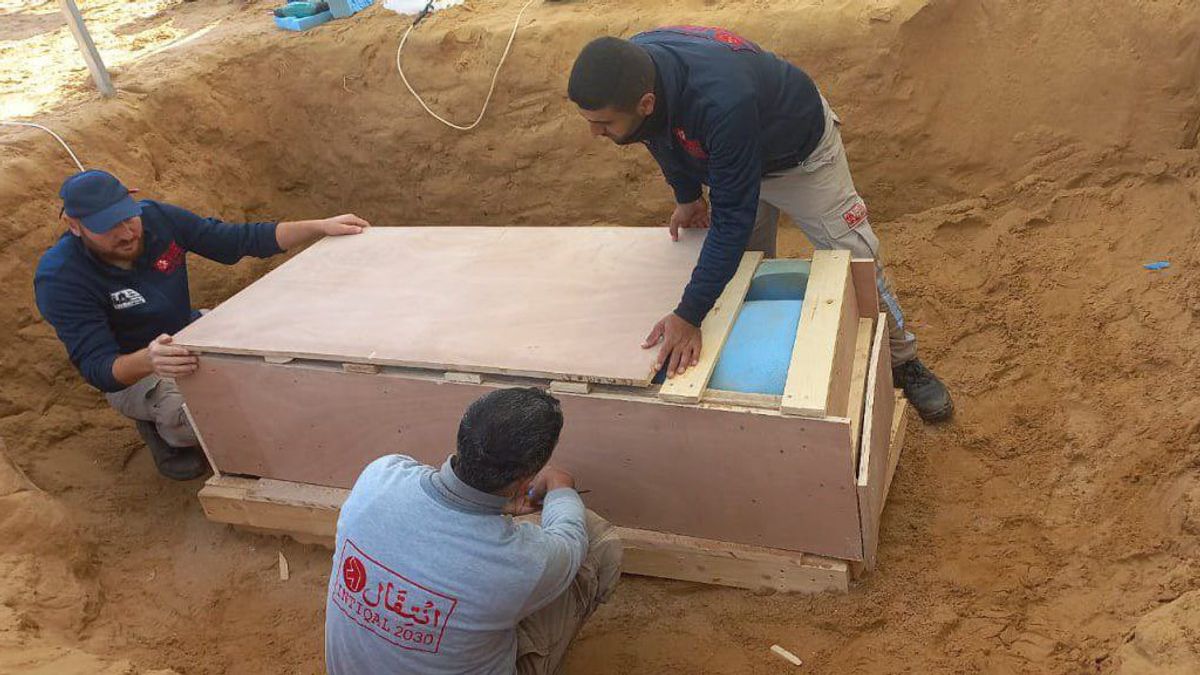JAKARTA - Palestinian workers in the Gaza Strip found dozens of ancient graves, including two tin-made sarkophagus, in a burial that was about 2,000 years old during the Roman Empire.
The findings led archaeologists to view the site as the largest grave found in Gaza.
Workers discovered the site in 2022, while working on an Egyptian-funded housing construction project near Jabaliya, the northern Gaza Strip, Palestine.
Since then, the crew has been working to dig the 2,700 square meter site with the support of French experts.
Kini, tempat yang semula merupakan lahan konstruksi yang tidak menjelaskan, dikelilingi oleh sekemlah blok apartemen yang tidak mengangkat, telah menjadi 'tambang emas' bagi para penelisa yang ingin mengerami lebih jauh tentang Palan Gaza.
Gaza, a coastal area inhabited by about 2.3 million people, has a rich history because it is located on the ancient trade route between Egypt and the Levant. However, a number of factors such as Israel's occupation, 16 years of Hamas control over the region, and rapid urban growth, are endangering many archaeological wealth in the trapped region.
The discovery of 60 graves on the site in January marks a major finding, archaeologists say. The number swelled to 135.
Rene Elter, a French archaeologist who led the excavation, said researchers had studied more than 100 graves.
"All of these tombs are being excavated and have revealed a large amount of information about cultural material as well as about the health conditions of the population and the disease this population may suffer from," said Elter, head of archeology for Intiqal, a program managed by France's Premiere Urgency Internationale., reported by The National News 10 October.
He pointed to a tin-made sarkophagus, one featuring a wine leaf decoration, the other with a dolphin image, as an extraordinary finding.
"The discovery of the tin sarkophagus here is the first in Gaza," he said.
Given the scarcity of tin graves, Palestinian archaeologists, including Fadel Al Otul, suspect that there is a social elite buried there.
Al Otul said the cemetery may have been in the city, as the Romans used to put graves near the city center.
In addition to sarkophagus, the Elter team also restored the excavated skeleton and unified the shards of clay jars.
The skeleton found at the location will be sent out of Gaza for further analysis, said Al Otul. His body will be returned to the Ministry of Antiquities and Tourism led by Hamas.
VOIR éGALEMENT:
Elter said the region needed a special team to oversee archaeological activities in Gaza.
"Gaza residents have the right to tell their stories," he said.
"Gaza has many potential archaeological sites, but monitoring each site, given the rapid development, is not an easy thing," he concluded.
The English, Chinese, Japanese, Arabic, and French versions are automatically generated by the AI. So there may still be inaccuracies in translating, please always see Indonesian as our main language. (system supported by DigitalSiber.id)













